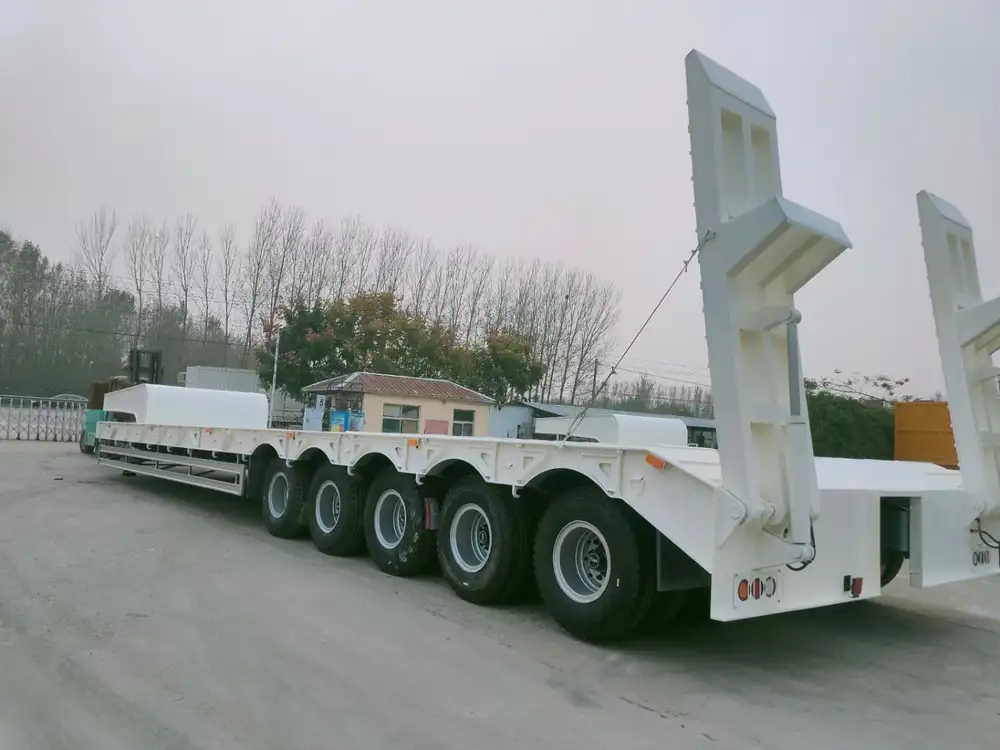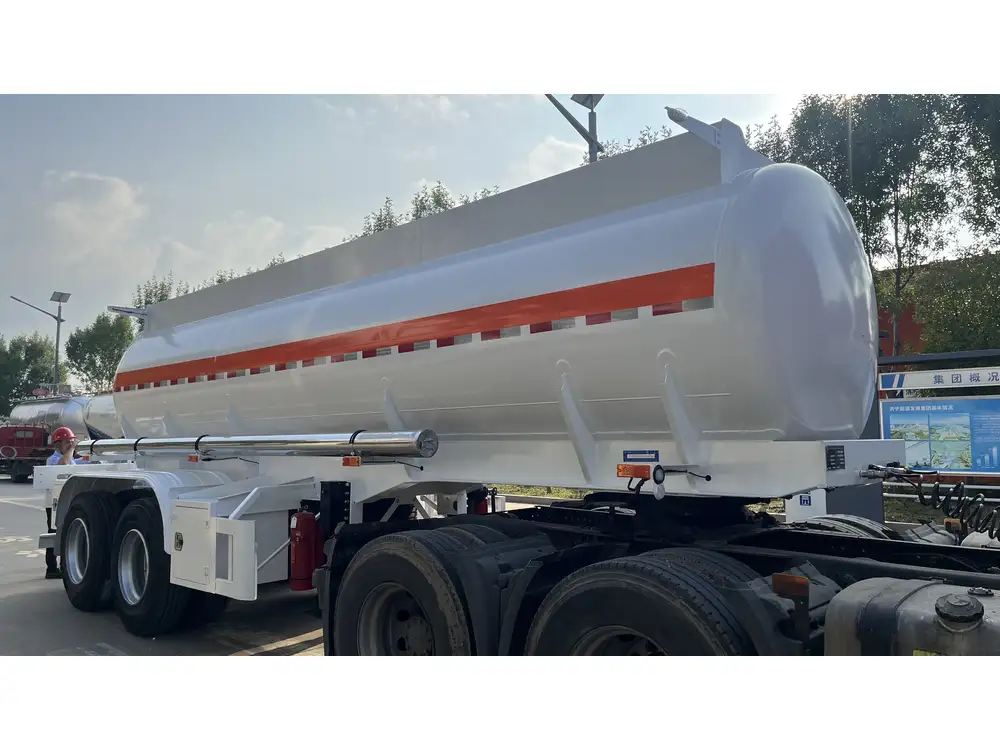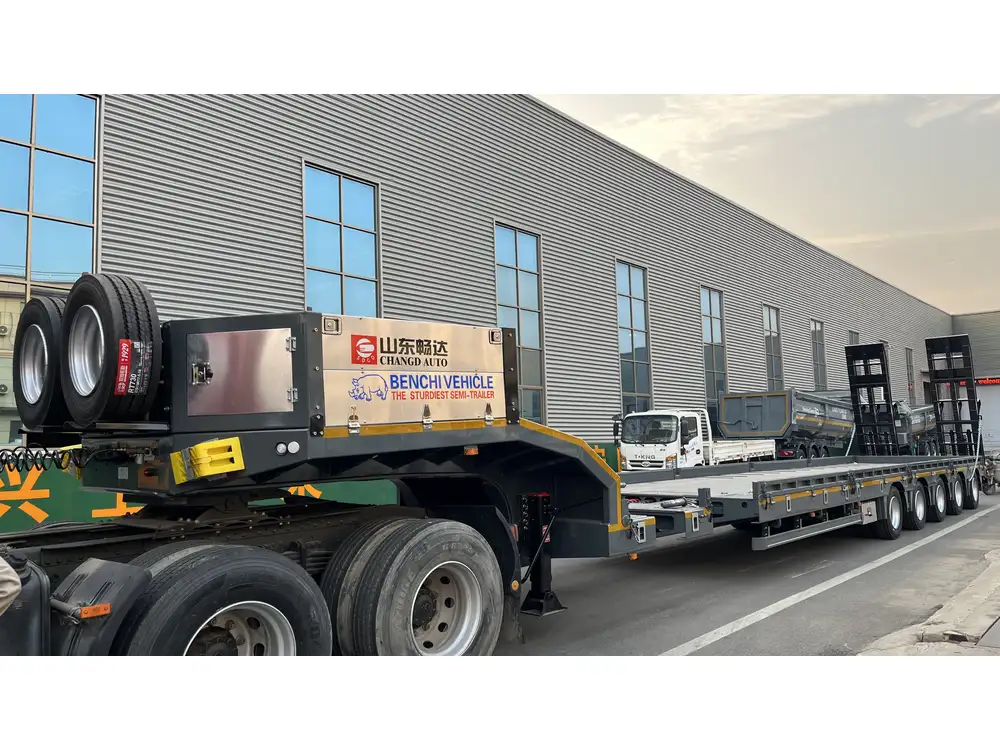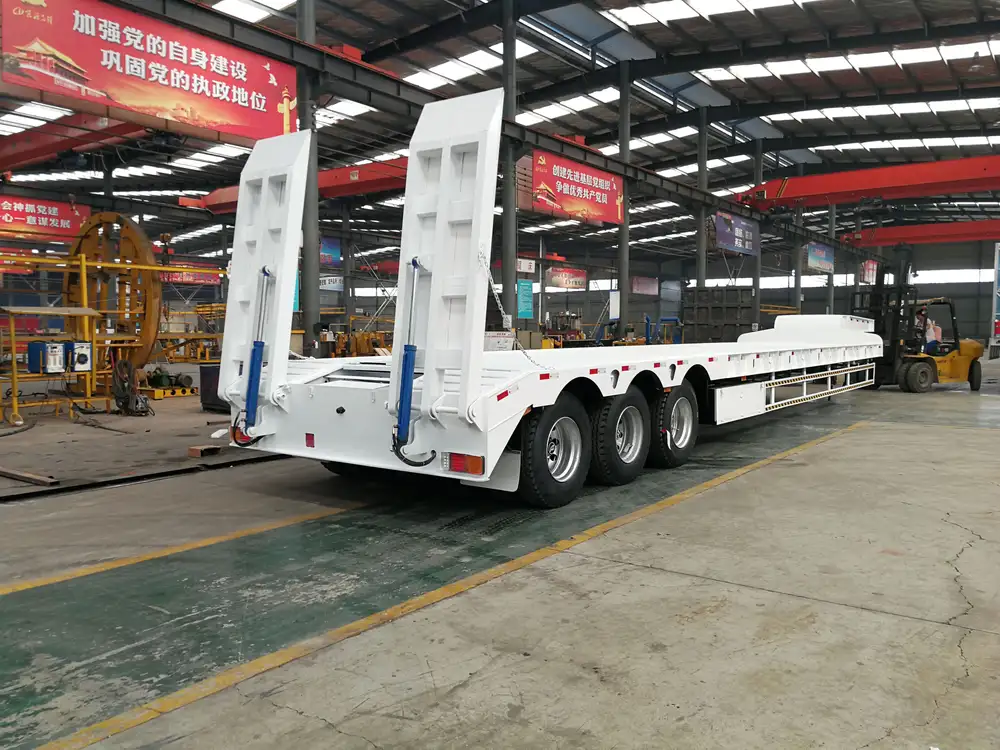When it comes to towing heavy loads, selecting the right trailer hitch system is paramount. Among the most popular options are gooseneck and fifth wheel trailers. Both offer robust capabilities for transporting substantial weights, but they cater to different needs and preferences. In this comprehensive guide, we delve into the nuances of each system to help you make an informed decision tailored to your specific requirements.
Introduction to Semi-Trailer Hitching Systems
Semi-trailer hitching systems are designed to connect trailers securely to towing vehicles, ensuring stability and safety during transit. The two primary types—gooseneck and fifth wheel—differ in design, functionality, and applications. Understanding these differences is crucial for optimizing performance, enhancing maneuverability, and ensuring the longevity of both the trailer and the towing vehicle.
What is a Gooseneck Trailer?

Design Features
A gooseneck trailer utilizes a hitch that extends into a ball mounted in a gooseneck on the towing vehicle. Typically found on trucks and heavy-duty vehicles, this design allows for a compact connection point:
- Hitching Mechanism: Utilizes a kingpin that locks into the trailer’s coupler.
- Connection Point: Located in the truck bed, providing a short overhang.
- Structural Integration: The trailer’s attachment is integrated into the towing vehicle’s frame.
Advantages
- Enhanced Stability: The centralized hitch point ensures even weight distribution.
- Improved Maneuverability: Shorter trailer overhang facilitates easier turning and navigation.
- Higher Towing Capacity: Suitable for heavier loads due to the strong connection mechanism.
Common Applications
- Commercial Transport: Ideal for hauling construction equipment, livestock, and large cargo.
- Heavy Hauling: Suitable for oversized or exceptionally heavy loads that exceed standard towing capacities.
- Agricultural Use: Commonly used in farming for transporting machinery and produce.

What is a Fifth Wheel Trailer?
Design Features
A fifth wheel trailer employs a hitch that sits over the truck’s rear axle, resembling the fifth wheel found in horse-drawn carriages:
- Hitching Mechanism: Features a kingpin that locks into a plate mounted above the truck’s bed.
- Connection Point: Positioned over the tractor’s rear axle for optimal weight distribution.
- Structural Integration: The trailer’s attachment extends over the towing vehicle, providing balance.
Advantages
- Superior Weight Distribution: Centralizes the trailer’s weight over the vehicle’s axle, enhancing stability.
- Increased Payload Capacity: Allows for higher payloads without compromising vehicle performance.
- Enhanced Maneuverability: The extended hitch point facilitates smoother turns and reduced trailer sway.

Common Applications
- Recreational Towing: Popular among RV enthusiasts for camping and travel.
- Heavy Machinery Transport: Used for moving large industrial or agricultural equipment.
- Utility Operations: Employed in services requiring the transport of bulky materials or equipment.
Key Differences Between Gooseneck and Fifth Wheel Trailers
Understanding the distinctions between these two systems is essential for selecting the right trailer for your needs. Below is a detailed comparison highlighting the primary differences:
| Feature | Gooseneck Trailer | Fifth Wheel Trailer |
|---|---|---|
| Hitch Connection | Mounts in the truck bed with a ball and coupler system | Sits over the rear axle with a specialized plate system |
| Weight Distribution | Balanced over the truck’s rear, promoting stability | Centralized over the axle, enhancing payload capacity |
| Maneuverability | Slightly more challenging due to shorter overhang | Easier turns with longer hitch overhang |
| Tipping and Stability | High stability with low risk of tipping | Excellent stability, especially with heavy loads |
| Truck Compatibility | Best suited for trucks with ample bed space | Requires trucks with compatible bed configurations |
Hitch Connection Mechanism
- Gooseneck: Utilizes a kingpin and coupler system, requiring precise alignment during connection.
- Fifth Wheel: Employs a specialized fifth wheel plate that simplifies the hitching process with quicker attachment and detachment.

Weight Distribution
- Gooseneck: Distributes weight more evenly across the rear of the truck, ensuring stability even with heavy loads.
- Fifth Wheel: Concentrates the trailer’s weight directly over the truck’s axle, allowing for greater payload without overloading the vehicle.
Maneuverability
- Gooseneck: The shorter overhang can make tight turns slightly more challenging compared to fifth wheels.
- Fifth Wheel: The extended hitch position over the axle provides superior maneuverability, especially in confined spaces.
Tipping and Stability
- Gooseneck: Offers robust stability with a low center of gravity, reducing the risk of tipping.
- Fifth Wheel: Maintains exceptional stability due to weight centralization, even under substantial loads.

Truck Compatibility
- Gooseneck: Ideal for trucks with ample bed space and a robust frame capable of supporting the hitch system.
- Fifth Wheel: Requires trucks equipped with compatible bed configurations and specific mounting plates for the hitch.
Performance Comparison
Towing Capacity
Both gooseneck and fifth wheel trailers boast impressive towing capacities, often exceeding those of traditional hitch systems:
- Gooseneck Trailers: Can typically tow up to 50,000 pounds, depending on the truck’s specifications and trailer design.
- Fifth Wheel Trailers: Similar towing capacities, with some models optimized for even higher weights due to superior weight distribution.

Maneuvering in Tight Spaces
- Gooseneck: May require more skill to navigate tight corners, but modern designs have mitigated many challenges.
- Fifth Wheel: Generally easier to maneuver in confined areas, with the extended hitch allowing for sharper and more controlled turns.
Load Distribution Efficiency
- Gooseneck: Efficiently distributes weight across the truck’s rear, minimizing strain on any single point.
- Fifth Wheel: Maximizes load distribution by centering weight over the axle, promoting balanced towing dynamics.
Cost Considerations

Initial Investment
- Gooseneck Trailers: Often more affordable upfront compared to fifth wheels, making them a cost-effective choice for many commercial applications.
- Fifth Wheel Trailers: Typically require a higher initial investment due to the specialized hitch system and enhanced features.
Maintenance and Durability
- Gooseneck Trailers: Known for their rugged construction and minimal maintenance requirements, contributing to long-term durability.
- Fifth Wheel Trailers: While slightly more complex, they offer robust durability and may require regular maintenance of the fifth wheel plate and hitch components.
Choosing the Right Trailer for Your Needs
Selecting between a gooseneck and fifth wheel trailer involves careful consideration of various factors:

Assessing Your Towing Requirements
- Load Type and Weight: Determine the typical load you’ll be transporting. Heavier and bulkier loads may benefit from the enhanced stability of a fifth wheel.
- Usage Frequency: Commercial operations might prefer gooseneck trailers for their cost-effectiveness and durability, while recreational users might lean towards fifth wheels for their maneuverability and comfort.
Evaluating Truck Compatibility
- Truck Bed Configuration: Ensure your vehicle’s bed can accommodate the hitch system of the chosen trailer type.
- Engine and Drivetrain: Verify that your truck’s engine and drivetrain are capable of handling the additional weight and stress of towing.
Considering Future Expansion
- Scalability: If you anticipate expanding your towing operations, a versatile hitch system that accommodates various trailer sizes and types may be advantageous.
- Accessory Options: Look for trailers that offer customizable features and accessories to adapt to evolving needs.

Why Choose CarMax Trailer?
At CarMax Trailer, we specialize in manufacturing high-quality gooseneck and fifth wheel trailers designed to meet diverse towing needs. Our commitment to excellence ensures that every trailer we produce offers:
Quality Manufacturing
We employ state-of-the-art manufacturing processes and rigorous quality control measures to deliver trailers that withstand the toughest conditions.
Innovative Designs
Our trailers feature innovative designs that enhance performance, including advanced suspension systems, durable materials, and user-friendly hitch mechanisms.

Customer Support and Service
We pride ourselves on exceptional customer service, providing comprehensive support from selection to maintenance to ensure your towing experience is seamless and satisfactory.
Conclusion
Choosing between a gooseneck and fifth wheel trailer hinges on your specific towing needs, vehicle compatibility, and long-term objectives. Both systems offer robust performance, exceptional stability, and high towing capacities, but their distinct differences cater to varying applications and preferences. By thoroughly assessing your requirements and understanding the key features of each trailer type, you can make an informed decision that enhances your towing efficiency and overall experience.
At CarMax Trailer, we are dedicated to providing top-tier trailer solutions tailored to your unique needs. Whether you require the rugged versatility of a gooseneck trailer or the superior maneuverability of a fifth wheel, our range of products ensures you have the right equipment to achieve your goals.
Frequently Asked Questions
1. Can I switch between gooseneck and fifth wheel trailers with the same truck?
While it’s technically possible to switch between gooseneck and fifth wheel trailers, it typically requires different hitch systems and may involve modifications to your truck. It’s essential to consult with a professional to ensure compatibility and safety.
2. Which trailer type is better for recreational use?
Fifth wheel trailers are often preferred for recreational use due to their superior maneuverability and comfort features. However, gooseneck trailers can also be an excellent choice depending on your specific needs and the type of recreational activities you pursue.
3. How does the maintenance of gooseneck and fifth wheel trailers compare?
Gooseneck trailers generally require less maintenance due to their simpler hitch design. Fifth wheel trailers may require more regular maintenance of the hitch plate and locking mechanisms to ensure optimal performance and safety.
4. Are there any licensing requirements for towing gooseneck or fifth wheel trailers?
Licensing requirements vary by region and the weight of the trailer being towed. It’s important to check with local transportation authorities to determine if special licenses or permits are needed for your specific trailer type and towing capacity.
5. Can I tow both types of trailers with a standard pickup truck?
Standard pickup trucks may be capable of towing both gooseneck and fifth wheel trailers, provided they are equipped with the appropriate hitch systems and have sufficient towing capacity. Always verify your truck’s towing specifications and consult the manufacturer or a professional installer to ensure compatibility.



